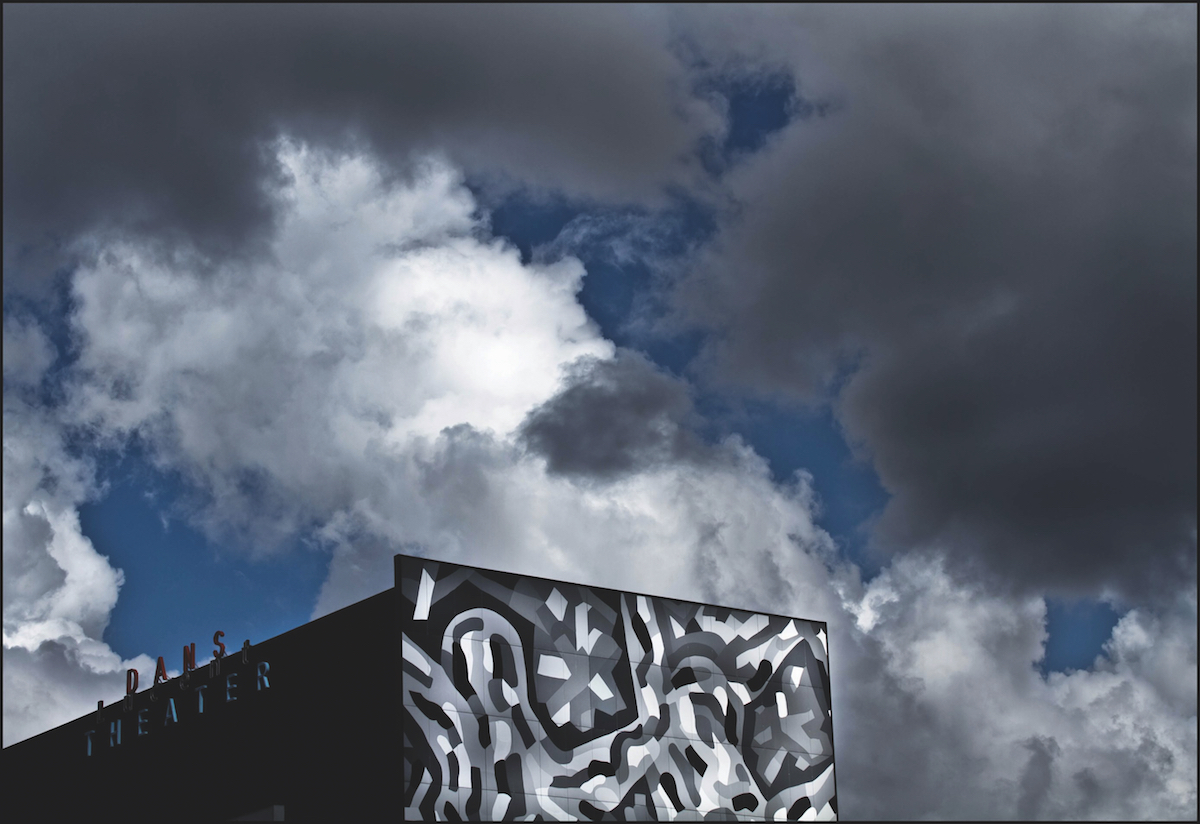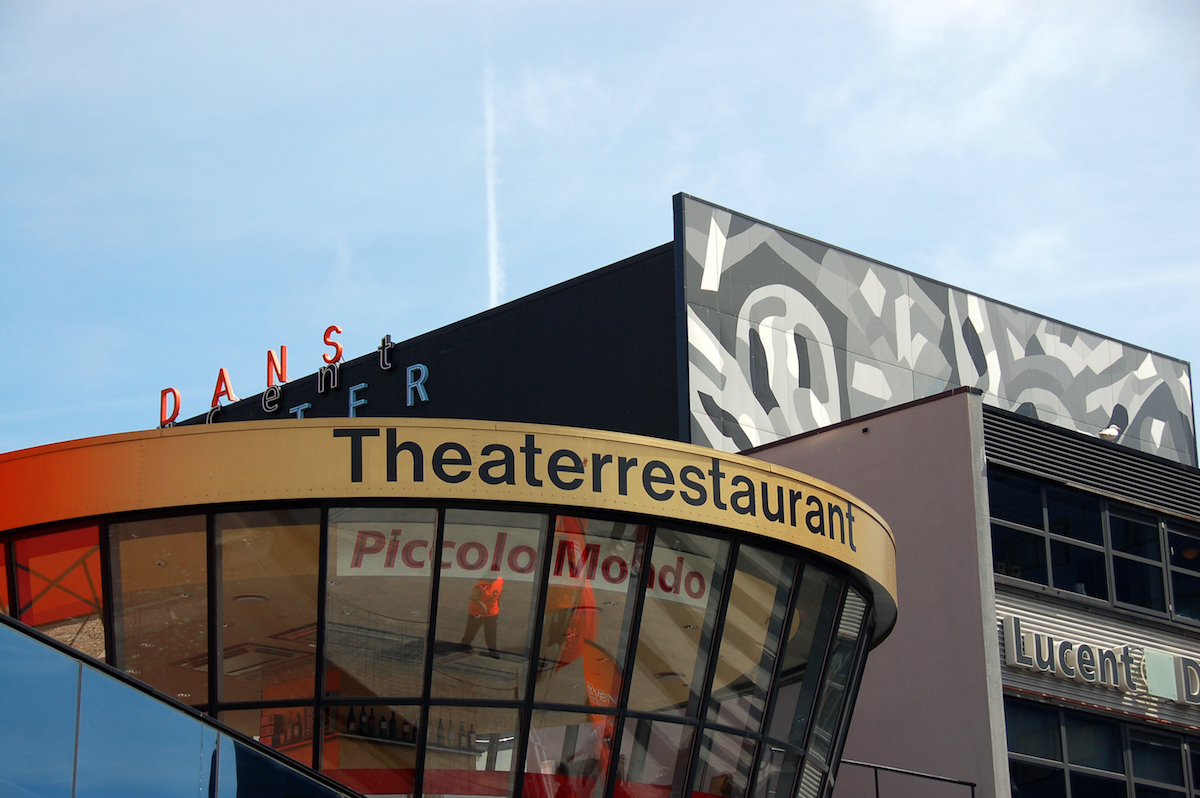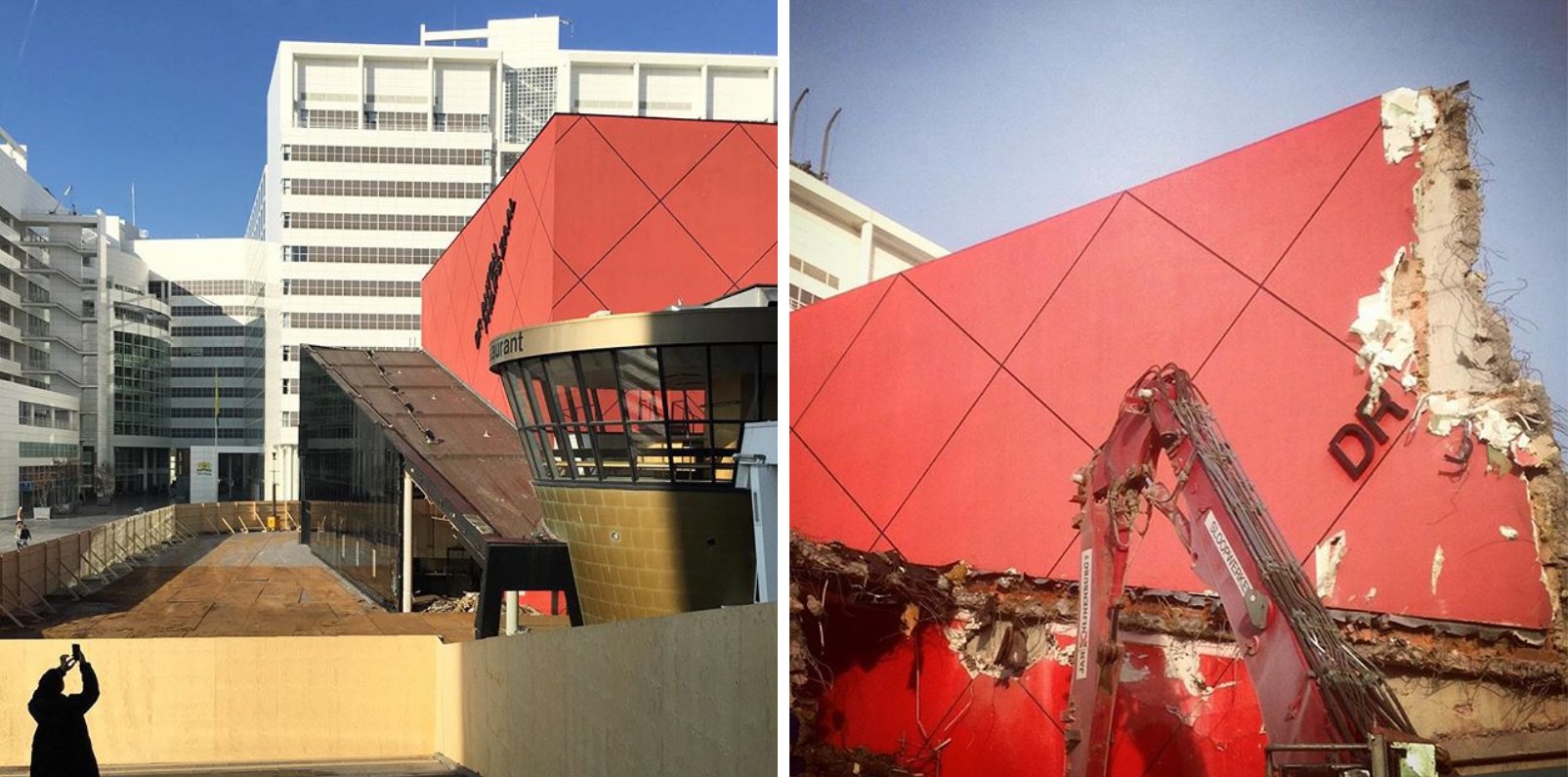Rem Sleep
by Vincent Schipper

Netherlands Dance Theater, The Hague (now demolished). 2011.
In 1987, the Netherlands Dance Theater — a major, disjunctive work of postmodern architecture, featuring a confetti-strewn mural and a restaurant housed in a gold cone — opened in The Hague. In November 2015, it was shuttered. By the end of January 2016, it was razed. Virtually nothing was left of the first major commission of OMA, the firm headed by Rem Koolhaas that, more than any other, made my country a hothouse for contemporary architecture over the last quarter-century. Even more jarring, no one seemed to care; the destruction of the theater occasioned little press coverage, not even in architectural magazines.
The demolition of Koolhaas’s earliest work fits seamlessly into his theoretical pondering, of course; he has long been a critic of architectural preservation, and his 2010 exhibition “Cronocaos” accused governments of ossifying cities through the fetish of landmarking. Yet even the architect noted — with deadpan Koolhaasian irony — that the lack of public response surprised him, and something about this episode grinds about, uneasily, in the back of the skull.

In “Junkspace,” his classic, unhinged essay from 2001, Koolhaas lamented the decreasing importance of real architecture in contemporary cities, superseded by a generic morass of malls, convention centers, airports, and art galleries. It warned of the erasure of history itself, one that recalled the vedute of the 18th-century Italian architect Giambattista Piranesi, whose visions of the ruins of Rome — sometimes real, sometimes confected — were central to Enlightenment archaeology. (The garden of Koolhaas’s CCTV Tower, that massive donut-shaped skyscraper in Beijing, is explicitly modeled after Piranesi’s Campo Marzio, an exacting reconstruction of Rome as it once was.) Like Piranesi, Koolhaas is obsessed with the past, and would rather live among its ruins than find false comfort in a flattened present. Both see the urban environment as properly de ned by its architecture, not the other way around. More to the point, both see time collapsed physically by space.

Does the Netherlands today, and specifically its cultural sector, have the ambition to create things with the historical heft Piranesi and Koolhaas demand — or does it only want junkspace theaters, junkspace galleries, junkspace cities? What sticks in the craw is not the unceremonious manner that the Netherlands Dance Theater was swept from the urban landscape, nor the all too apparent stench of political misconduct that wafts from the site of its destruction. It is a dull irritation that is bigger than just a building — bigger than Koolhaas. In the Netherlands today, more often than not, junkspace is perpetuated and even glorified. There is clearly a lack of imagination or, more sinisterly, a lack of will.
The question of ruin does not only pertain to architecture. Again and again we are told that the decline of the Dutch cultural sector is a symptom of a lack of funding. The previous government cut funding for culture by a swinging 22%, and a recent report confirmed that most artists in the Netherlands are not able to support themselves financially (the shock has yet to set in). The general feeling here is that the cultural sphere is what it is, and we must all play our part in buttressing the greater culture-industrial complex as our friend and guardian. But to do so is to lose sight of the individual parts that actually make up culture, and to give up on historical ambition in favor of producing ever more junk. Doing things differently will require more than sentimentality about the loss of a historic Koolhaas building; it will require thinking about history itself, and our place in it, like the Dutch architect and his Venetian forebear. The best approach would be to imagine our cultural landscape as a Piranesian ruin offering potential for something new, rather than the junkspace that it is.